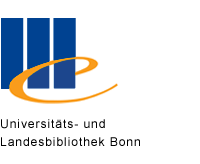This paper evaluates the global welfare consequences of increases in mortality and poverty generated by the Covid-19 pandemic. Increases in mortality are measured in terms of the number of years of life lost (LY) to the pandemic. Additional years spent in poverty (PY) are conservatively estimated using growth estimates for 2020 and two dierent scenarios for its distributional characteristics. Using years of life as a welfare metric yields a single parameter that captures the underlying trade-off between lives and livelihoods: how many PYs have the same welfare cost as one LY. Taking an agnostic view of this parameter, estimates of LYs and PYs are compared across countries for different scenarios. Three main ndings arise. First, as of early June 2020, the pandemic (and the observed private and policy responses) has generated at least 68 million additional poverty years and 4.3 million years of life lost across 150 countries. The ratio of PYs to LYs is very large in most countries, suggesting that the poverty consequences of the crisis are of paramount importance. Second, this ratio declines systematically with GDP per capita: poverty accounts for a much greater share of the welfare costs in poorer countries. Finally, the dominance of poverty over mortality is reversed in a counterfactual herd immunity scenario: without any policy intervention, LYs tend to be greater than PYs, and the overall welfare losses are greater.

